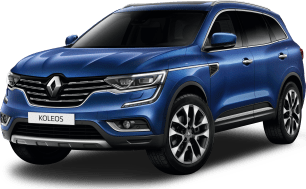Here’s where things get a bit frustrating, and your experience will vary dramatically depending on how you use this car.
One thing we can get out of the way immediately is the Touareg is deeply technically impressive when you attack a few corners. Its immediate electric thrust is capable of propelling this large object forward with eye-widening speed, and the air suspension, wide grippy tyres, Torsen centre differential and tidy steering tune conspire to make it mind-bending to carve corners in.
It’s flat, stable, and far more accurate and agile than expected. The only hint as to the sheer physics of wrangling the Touareg around bends is the tyres screaming out in agony as the suspension and all-wheel drive system work their magic to keep it all under control.
Once the electric torque pushes you out from the corner, the deep satisfying thrum of the 3.0-litre petrol V6 quickly takes over as you lurch forward on the almost fluid-feeling suspension. It’s laugh-out-loud satisfying and certainly enough to capture passengers' attention.
In this sense, the R fulfils its mission of transforming the big Touareg into a handling and acceleration hero, but despite all the cleverness it doesn’t feel as sharp or lean as the Golf R, T-Roc R or Tiguan R.
There’s still a massive battery, as well as huge complexity and weight to deal with, no matter how technically fast it is. There’s always the unsettling feeling of this amount of weight moving around, and the occasional slight delay from the transmission as it figures out what’s going on between the electric motor and big engine.
Then there are the compromises. Normally, I’m a huge fan of how plush and luxurious the Touareg feels. It’s usually such a step above its station in the VW Group, occasionally even feeling preferable to its platform relations, but the R has some issues.
For a start, the enormous 22-inch wheels and low-profile tyres ruin the day-to-day ride quality, crashing over bumps and road imperfections, despite the fact there’s also air suspension supposedly providing a buffer between you and the tarmac.
Even in the more comfort-oriented drive settings you can hear and feel every bit the moment the wheels contact a pothole or bump. Clearly, it’s tuned more toward handling than maintaining the same luxury feel as the rest of the range.
The transmission is also occasionally hesitant, either from a standing start or when switching between electric thrust and the engine. This is much better when the battery is charged up from the reserve level, as there isn’t enough charge when driving around as a hybrid to push a big, heavy (and always) all-wheel drive very far.
But hybrid driving is also frustrating, for reasons mainly related to the software. With the battery charged, the 51km of claimed driving range feels a tad ambitious. I was able to charge it to about 50 per cent (the battery is huge, at 17.9kWh, and I could only pull about 3.5kW from a local AC charging unit) and scored about 20km of driving range.
It drains quickly, even in the hybrid driving mode, as it relies on the electric motor a lot for initial take-off.
This means unless you set the battery preserve mode manually in the hybrid settings screen, it will likely run the battery dry before you’re even able to get it somewhere where it can take full advantage of the extra electric thrust.
As an electric vehicle it’s also only alright. The short time I was able to spend in full EV mode proved the battery will drain faster than advertised, and the regen is so-so for assisting in braking.
Other more performance-focused PHEVs suffer the same issue. For example, I felt largely the same way about the much-maligned four-cylinder PHEV Mercedes-AMG C63.
While hybrids like this may be impressive when conditions are ideal, they’re ultimately frustrating to use in reality. It’s a shame, because I wanted to like it more but it doesn’t quite capture the same magic of its R-badged forebears and siblings.

